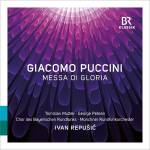Votre cherche:
pas de sélection
Résultats limité:
|
 |
| Remarque / Liste des chansons: |
Das Lied von der Erde 01. "Nr. 1 Das Trinklied vom Jammer der Erde: Allegro pesante" 01. "Nr. 1 Das Trinklied vom Jammer der Erde: Allegro pesante" 02. "Nr. 2 Der Einsame im Herbst: Etwas schleichend, ermüdet" 02. "Nr. 2 Der Einsame im Herbst: Etwas schleichend, ermüdet" 03. "Nr. 3 Von der Jugend: Behaglich heiter" 03. "Nr. 3 Von der Jugend: Behaglich heiter" 04. "Nr. 4 Von der Sch?nheit: Comodo, dolcissimo" 04. "Nr. 4 Von der Sch?nheit: Comodo, dolcissimo" 05. "Nr. 5 Der Trunkene im Frühling: Allegro, keck, aber nicht zu schnell - Pesante" 05. "Nr. 5 Der Trunkene im Frühling: Allegro, keck, aber nicht zu schnell - Pesante" 06. "Nr. 6 Der Abschied: Schwer" 06. "Nr. 6 Der Abschied: Schwer"
|
 | | Nombre de disques: |
1 |
 | | Informations supplémentaires: |
S.o. Des Bayerischen Rundfunks/ Simon Rattle |
 | | Description: | Mahler's "Das Lied von der Erde" (The Song of the Earth) is subtitled "A symphony for tenor, alto (or baritone) voice and orchestra". It examines the border between two different genres: the Lied, in it's extended form as a song cycle, and the symphony. And as ever in Mahler's music, that border is anything but black and white. The work certainly differs radically from a mere song cycle: the Lieder are permeated by symphonic techniques and some symphonic movements are built up from huge stanzas. Interludes expand to become development sections in which important things happen. Indeed, the thematic events take place in the orchestra, and, in a certain sense, the soloists also form a part of the interwoven orchestral texture. The sequence of movements also follows that of a symphony: In the weighty outer movements one clearly notices sonata form shining through the stanza structures, and symphonic processes are obviously taking place. Two inner movements take the place of the slow movement and sarcastic scherzo. The entire work is spanned by a taut arc, culminating - in accordance with the principle of intensification - in a huge final movement lasting as long as all the others together, and entitled Der Abschied (The Farewell). Here, Mahler is continuing the genre of the "Finale Symphony", and the brightening of C minor to C major is even reminiscent of his usual apotheoses. In this symphony, as in his others, Mahler wanted to "create a world using all existing technical means." The formal design of the work is unique, and the demands it places on it's performers are extreme. It requires two highly experienced Lied singers, who in combination with the huge orchestral apparatus have to be able to perform as soloists while blending into the symphonic structure as concert voices. An excellent and well-coordinated body of sound is needed here, and of course a highly competent conductor to ensure cohesion and to give spirit and soulfulness to such a large-scale work., Runningtime: 00:00:00, Booklet Editor [Editorial]: Thomas Becker, Booklet Editor [Lektorat]: Vera Baur, Composed By: Gustav Mahler, Conductor: Sir Simon Rattle, Design, Artwork: Barbara Huber, Edited By [Schnitt = Editing]: Leonie Wagner (2), Engineer [Toningenieur = Balance Engineer]: Peter Urban (2), Liner Notes [English Lyrics Translation]: Keith Anderson (6), Liner Notes [German]: Jörg Handstein, Liner Notes [Translation]: David Ingram (2), Lyrics By [Nach Gedichten Von]: Hans Bethge, Mastered By [Mastering Engineer]: Christoph Stickel, Mezzo-soprano Vocals: Magdalena Ko?ená, Orchestra: Symphonie-Orchester Des Bayerischen Rundfunks, Photography By [Foto Magdalena Ko?ená]: Oleg Rostovtsev, Photography By [Foto Sir Simon Rattle]: Oliver Helbig, Photography By [Foto Stuart Skelton]: Sim Canetty-Clarke, Photography By [Fotos Cover]: Imani Clovis, Photography By [Konzertfotos]: Peter Meisel (2), Producer [Tonmeister = Recording Producer]: Pauline Heister, Tenor Vocals: Stuart Skelton, Labelcode BRKK900172.2 (900172), Phonographic Copyright (p) BRmedia Service GmbH, Copyright (c) BRmedia Service GmbH, Copyright (c) Imani Clovis, Copyright (c) Gilbert E. Kaplan Collection, Copyright (c) Peter Meisel (2), Copyright (c) Oleg Rostotsev, Copyright (c) Oliver Helbig, Copyright (c) Sim Canetty-Clarke, Copyright (c) Naxos, Recorded At Herkulessaal, München, Glass Mastered At Arvato |  | | N° de titres: |
6 |
 | | N° de fabricant: |
900172 |
 | Sécurité des produits
Personne responsable pour l'UE:
BRmedia GmbH
Hopfenstr. 4, 80335 München, DE
info@br-media.de |  |
|
Les clients qui ont acheté ce produit ont aussi acheté
Il n'y a pour le moment aucune critique sur ce produit.
|  |
|
|
 |
|


















![Mariss Jansons / Chor & BRSO - Mariss Jansons-The Edition [DE-Version, Regio 2/B]](https://img.grooves.land/images/cover/200/900/c7hau962.j11)





